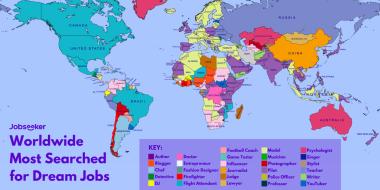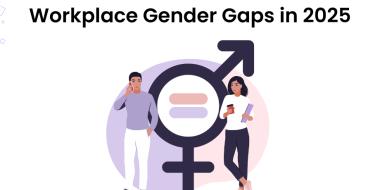CV vs Resume: Definitions and Key Differences
Sometimes the words ‘resume’ and ‘CV’ (or its unabbreviated form, ‘curriculum vitae’) are used seemingly interchangeably, which can lead to confusion. In fact, CVs and resumes are different types of documents with specific purposes.

It’s important to note that there are geographical differences when it comes to referring to CVs and resumes around the world, and for the purpose of this article, we will be generally focusing on the American/Canadian definition of the words.
This article will outline the definitions of both CVs and resumes and highlight the key differences between the two.
Resume vs. CV at a glance
Here’s a quick look at the key differences between a resume vs. CV:
Feature | Resume | CV |
|---|---|---|
Length | 1 to 2 pages | Can be multiple pages, no strict limit |
Content Focus | Professional experience, skills, summary | Academic achievements, research, publications, professional experience, skills
|
Usage | Most roles | Academic, research, education, and international positions |
Geographic Preference | Primarily used in the U.S. and Canada | Preferred in Europe and parts of Canada |
Order of Information | Reverse chronological order of jobs | Reverse chronological order of academic and professional history
|
Customizability | Tailored for specific jobs | Broad overview of academic and research roles
|
What is a CV?
‘CV’ is an abbreviation for ‘curriculum vitae,’ which means “course of life” in Latin. A CV is a comprehensive document that lists the entirety of your academic and professional achievements. This detailed summary has no standard length, though CVs commonly range from three to ten (or more) pages long.
In the United States and Canada, CVs are used almost exclusively for applying to academic jobs.
What To Include on a CV
When writing a CV for an academic position in the U.S. or Canada, you will likely want to include the following:
- Name and contact information
- Personal profile or research objective
- Education
- Professional academic positions (work experience)
- Books and/or chapters of books that you’ve written
- Peer-reviewed publications
- Other publications
- Academic awards and honors
- Grants and fellowships
- Conferences that you’ve attended
- Teaching experience
- Research/lab/fieldwork experience
- Languages and skills
- Memberships
- Non-academic activities
- References
A CV will be universal and can be submitted as-is to all potential employers. When you have a new achievement, simply add it to your existing CV. Most CVs are written in reverse-chronological order, with your most recent degrees or accomplishments listed first and working backwards from there.
What is a Resume?
A resume, on the other hand, is a much shorter, more specific document that is used for all other types of job applications in the United States and Canada. ‘Resume’ is also sometimes spelled ‘résumé’ which is French for “to sum up.” A resume is designed to provide a quick overview of your work history, education, and skills as they relate specifically to the job that you are applying for. Resumes are typically only one to two pages long and use bullet points to succinctly present your skills and accomplishments.
What To Include on a Resume
An American or Canadian resume should include:
- Your name and contact information
- Resume summary or resume objective
- Work experience
- Education
- Hard and soft skills
- Optional resume sections (awards and honors, languages, licenses and certifications, hobbies and interests, etc.)
Expert Tip
There are three main formats for resumes: reverse-chronological, functional, and combination. However, reverse-chronological resumes are the most common and generally the most effective.
CV vs Resume: Key Differences
So, the main differences between CVs and resumes are the length and the career industry for which they are used.
Length
CVs can be any length, and are often much longer than a resume. They should include every aspect of your education and academic work, which, for a very experienced candidate, can mean a document that is 10 pages long or more.
A resume should generally be limited to a single page for students, recent graduates, and professionals who have less than 10 years of experience in their industry. Those who have more than 10 years of experience or are applying to a high-level position might have a two- or three-page resume.
Career Industry
In the United States and Canada, CVs are generally only used by those who are applying to positions in academia. Shorter resumes are used by job candidates in all other fields.
Resume vs. CV? When to use each document
It’s important to consider the job you’re applying for and where the company is located so you can choose the appropriate document for your application. Generally, you should use a CV if the position involves:
- Academic, research, or educational roles
- A company located in the EU
Some Canadian-based organizations may also expect a CV instead of a resume. Carefully review the company’s job posting information so you can submit the correct document.
Resumes are a staple of the U.S. job market. They are particularly common in business, marketing, finance, and tech roles. You should use a resume if you are:
- Applying for a job in fields like business, marketing, or tech
- Looking for work in the U.S. or Canada
Remember that resumes are intended to be focused and to the point. Try to keep your document to one page and set a hard maximum length of two pages.
How the terms differ across the world
U.S. and Canadian-based organizations reserve the term “CV” for academic or research positions. However, many European countries use “CV” as the default term for any job application. Keep that in mind if you are exploring professional opportunities in Europe.
International Definitions
As mentioned above, this article has so far focused on the American and Canadian definitions of CVs and resumes, but other countries around the world have their own meanings for these words and customs regarding the document that should be submitted for a job application:
Europe and New Zealand
The word ‘resume’ isn’t used at all, but ‘CV’ is used to describe the equivalent of an American resume - a short document that highlights your experience, education, and skills. CVs are used to apply to jobs in any industry.
Australia and South Africa
‘CV’ and ‘resume’ are synonymous and are used interchangeably to describe a short document that is generally equivalent to an American or Canadian resume.
South Asia
In some South Asian countries like India and Bangladesh, it’s common to include your biodata with your resume information, which refers to personal statistics such as your date of birth, gender, race and/or ethnicity, salary information, and marital status.
This type of personal information should not be included on resumes or CVs in most of the rest of the world, since there are strict anti-discrimination laws in place. If an employer sees that type of information, they may automatically discard your application to avoid any potential discrimination concerns.
Do’s and don’ts
After you’ve identified which document you need, you’ve got to perfect the formatting so you can connect with hiring managers. A clean, well-organized document will be easier to read and more likely to pass through Applicant Tracking Systems (ATS), which many businesses use to screen candidates.
Here are some formatting do’s and don’ts for both documents.
Resume do’s
Create a stronger resume by:
- Remaining concise
- Staying focused on your professional experience
- Choosing a clean font
- Including a professional summary, relevant skills, and work history
These choices can make your resume stand out.
Resume don’ts
Avoid these resume mistakes:
- Don’t repeat everything on your cover letter
- Don’t use a generic document for every application
- Don’t ramble or use informal language
CVs are more complex and lengthier. While longer documents give you a better chance to tell the employer about yourself, they also open the door for errors. Here’s what you should and shouldn’t do when writing your CV:
CV do’s
A great CV will:
- Use a professional font
- Label each section
- Provide detailed descriptions of academic roles and other accomplishments
By taking advantage of these suggestions, you can make your CV stronger.
CV don’ts
Don’t make these mistakes on your CV:
- Don’t ramble
- Don’t be too brief
- Don’t overload the reader
These simple tips will help you craft an engaging document that meets the hiring manager’s expectations while sharing valuable information about who you are and what you bring to the table.
Key Takeaways
In the United States and Canada, a CV is a long, comprehensive summary of your entire academic and professional history that is used solely by those applying to academic positions. A resume, on the other hand, is a short summary of your work experience, education, skills, and achievements that is used by essentially all other industries. However, in some other countries around the world, the term ‘CV’ is used interchangeably with or in place of the word ‘resume.’
Not sure how to format your resume or CV? Jobseeker offers a professional resume creation tool as well as a professional CV creation tool. You can simply enter your information, select a template that you like, adjust the colors and fonts, and then download your polished resume or CV instantly!
Impress potential employers with your resume
Follow step-by-step professional guidance to create a polished resume in minutes.



